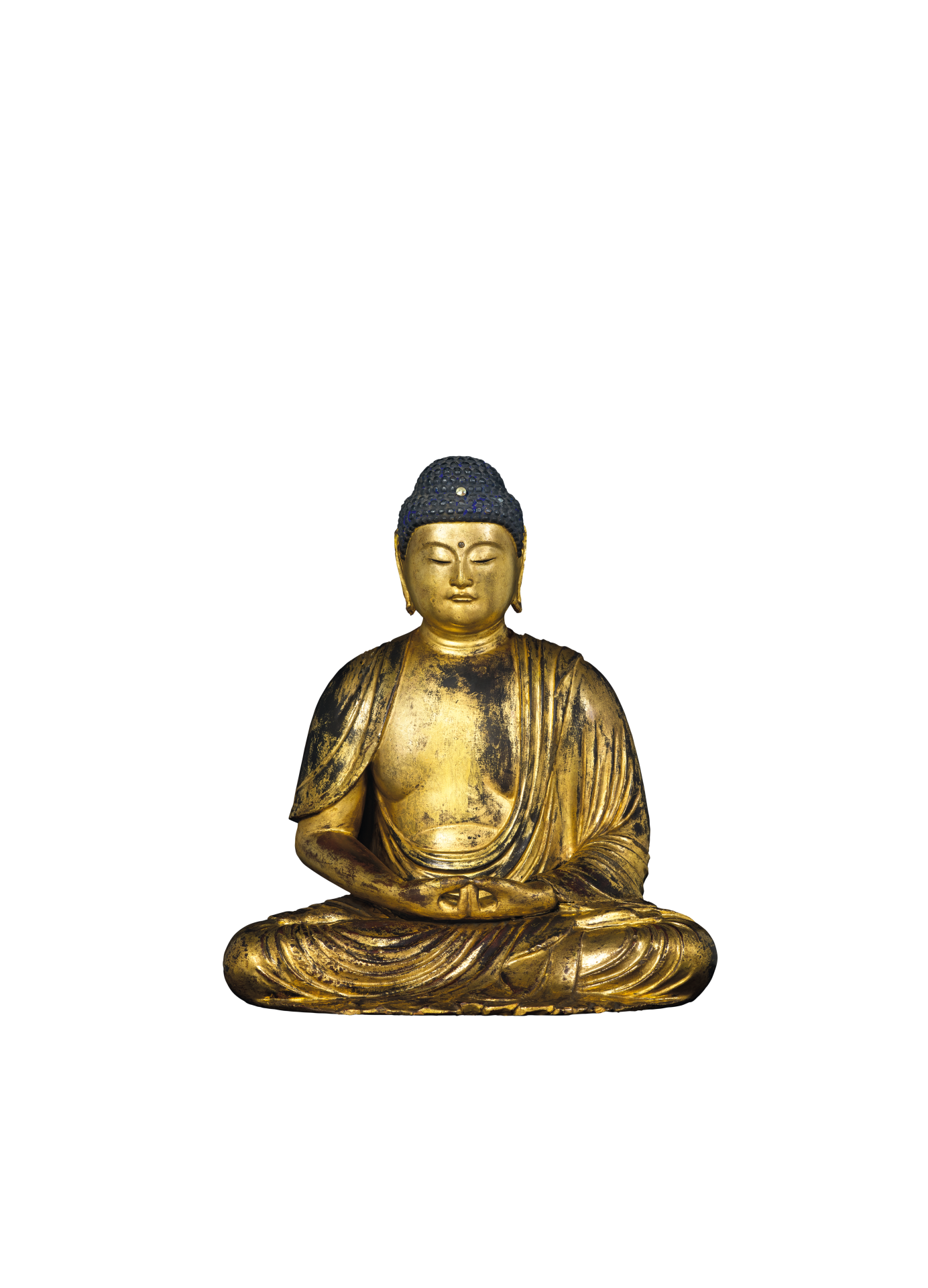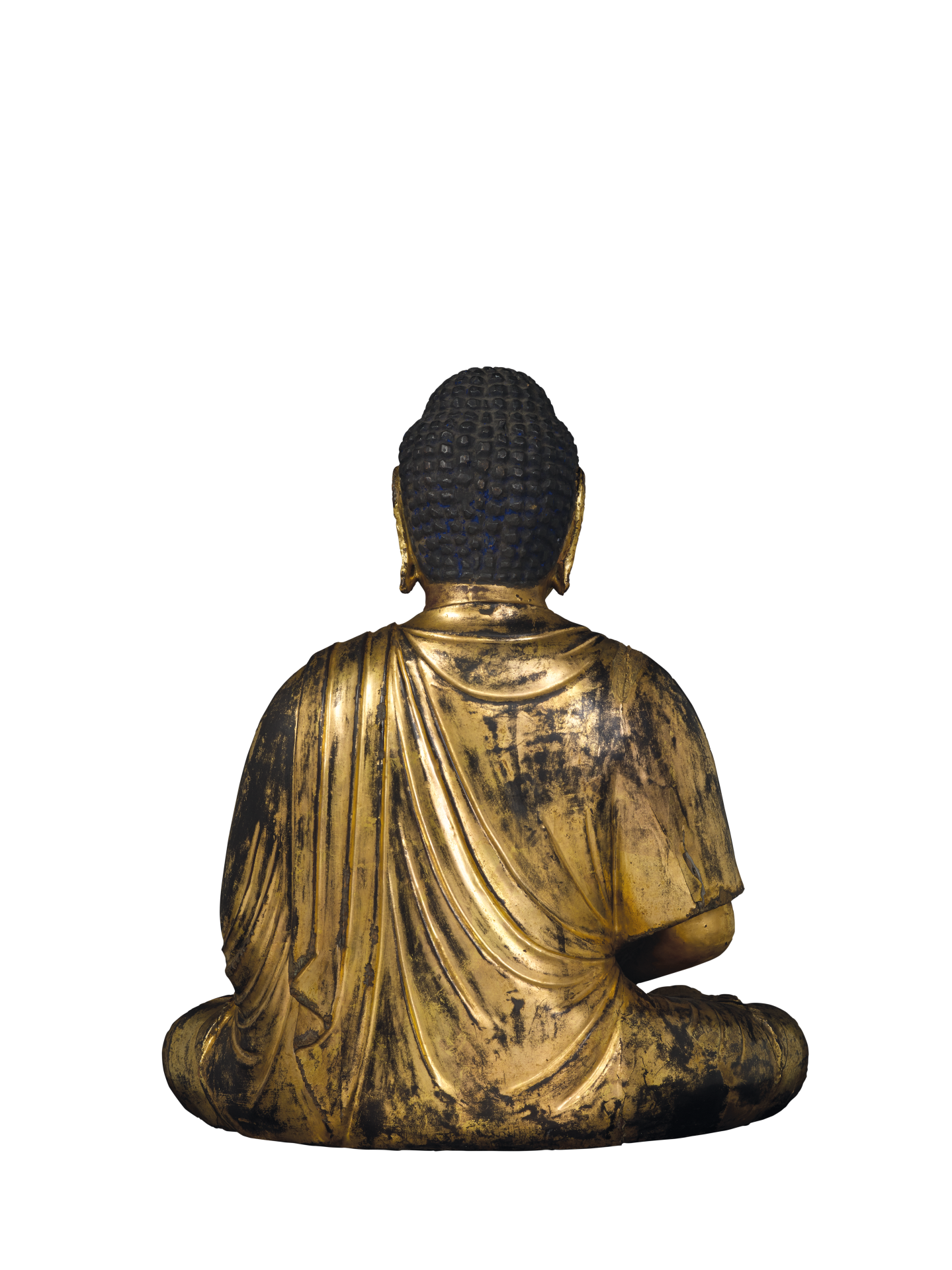Seated Amitābha Buddha
The Kamakura period (1192-1333) saw the founding of the Kamakura shogunate, the first samurai regime in Japanese history. The imperial court ruled by the Japanese emperor only existed in name. In addition to the noble-patronised Buddhist Schools known in Japan as Shingon-shū (Zhenyan School) and Tendai-shū (Tiantai School), various new Schools were also established during the Kamakura period. Among them were the Jōdo-shū (Pure Land School) which advocated the chanting of the phrase Nama Amituofo (Salute to Amitābha Buddha) and the name of the Buddha, as well as the Jōdo-shinshū (True Pure Land School) which proclaimed that evil people were the true objects of salvation. These new traditions became increasingly widespread amid the masses. Consequently, Amitābha became a popular subject adopted by Buddhist statuary of the time.
This statue shows Amitābha seated with legs locked in ‘lotus posture’ (padmāsana) and hands in ‘Amitābha meditation gesture’ symbolising taking rebirth in the “upper grade of the superior class”. He has an oblong face, a prominent uṣṇīṣa, tight snail-like indigo curls adorned with a gem, an ūrṇā between the eyebrows, close-set facial features, downcast eyes with lifted outer corners, a small mouth with thin lips, finely delineated hair at mouth corners, a delicate face, and a countenance showing solemnness and serenity. The kāṣāya leaves the right side of the body bare, while a corner of the robe covers the right shoulder.
The shoulders are broad and round. The plump and soft chest is slightly lolling, and the belly slightly bulging. The drapery is fluidly rendered and chiefly in the form of parallel catenaries. The ridged folds closely follow the undulation of the figure. The realistic portrayal vividly portrays the unique characteristics of Kamakura statuary. The sumptuous gold-painted surface of this statue still shines forth golden rays under light, greatly enhancing the majestic presence of Amitābha Buddha.

